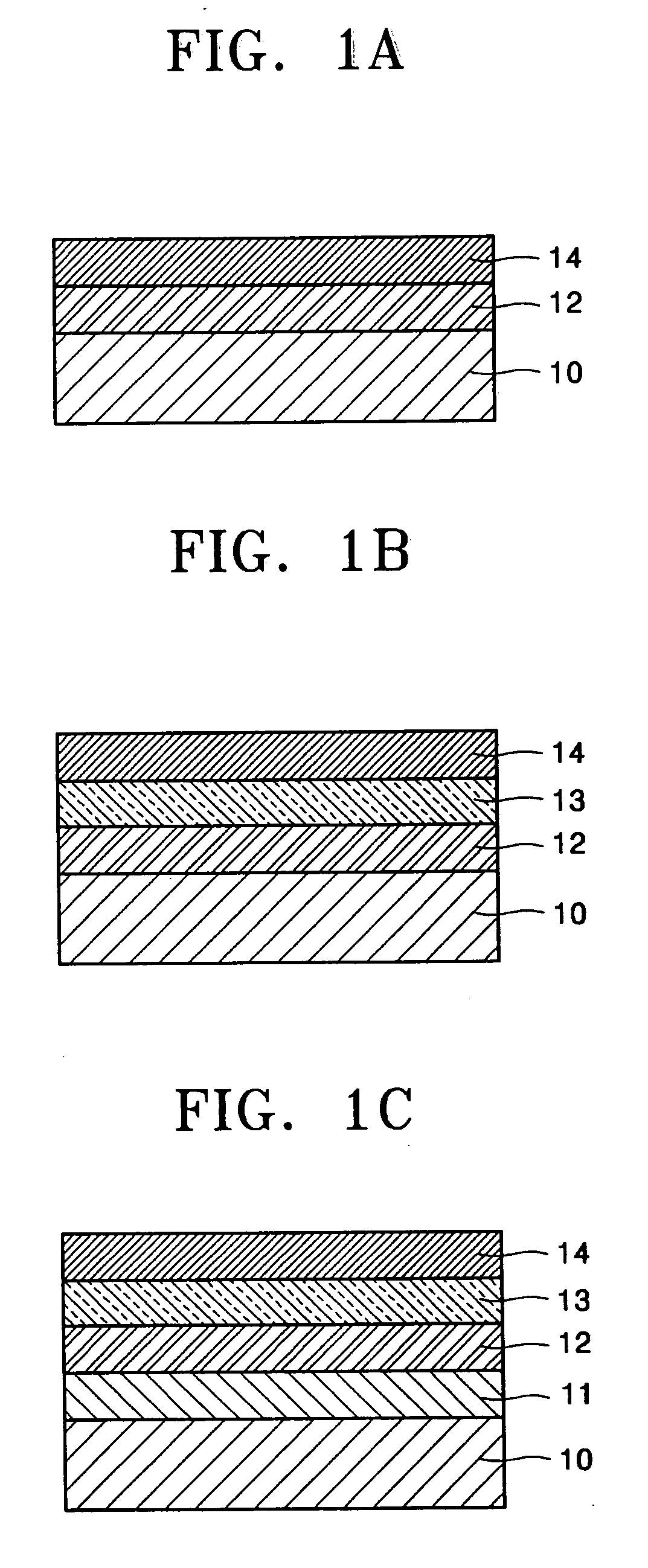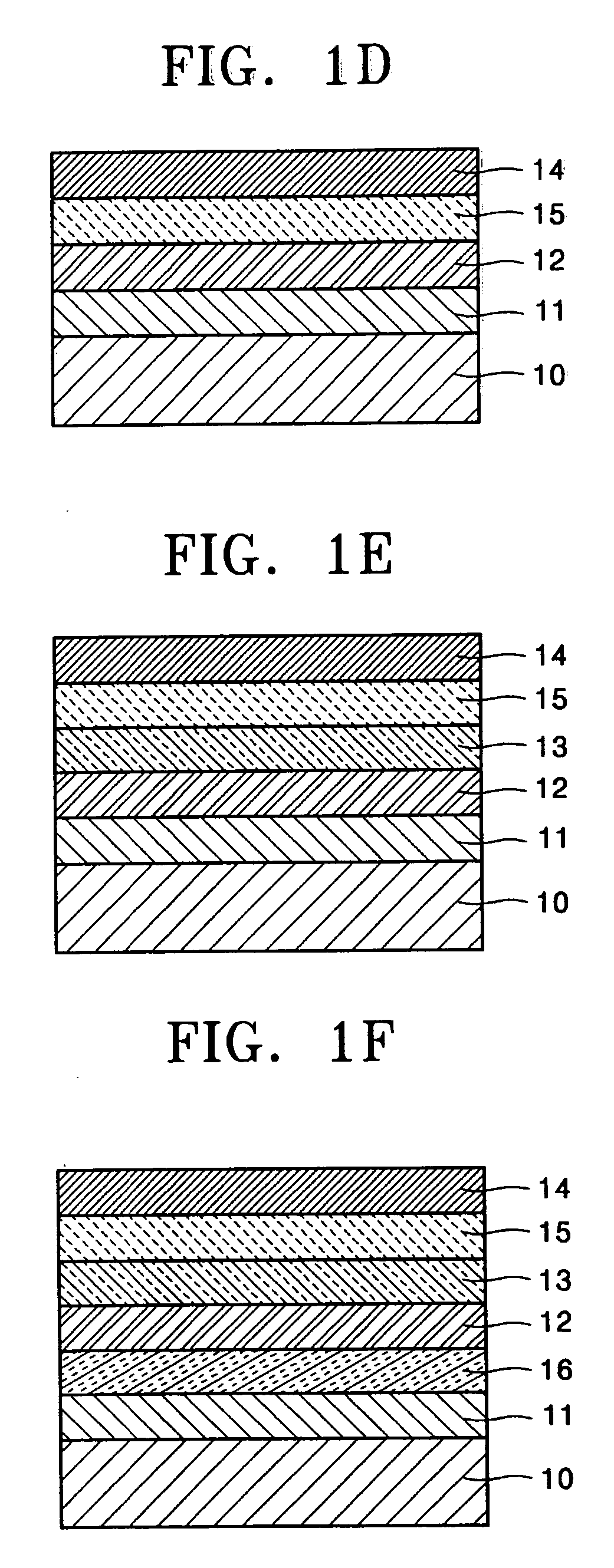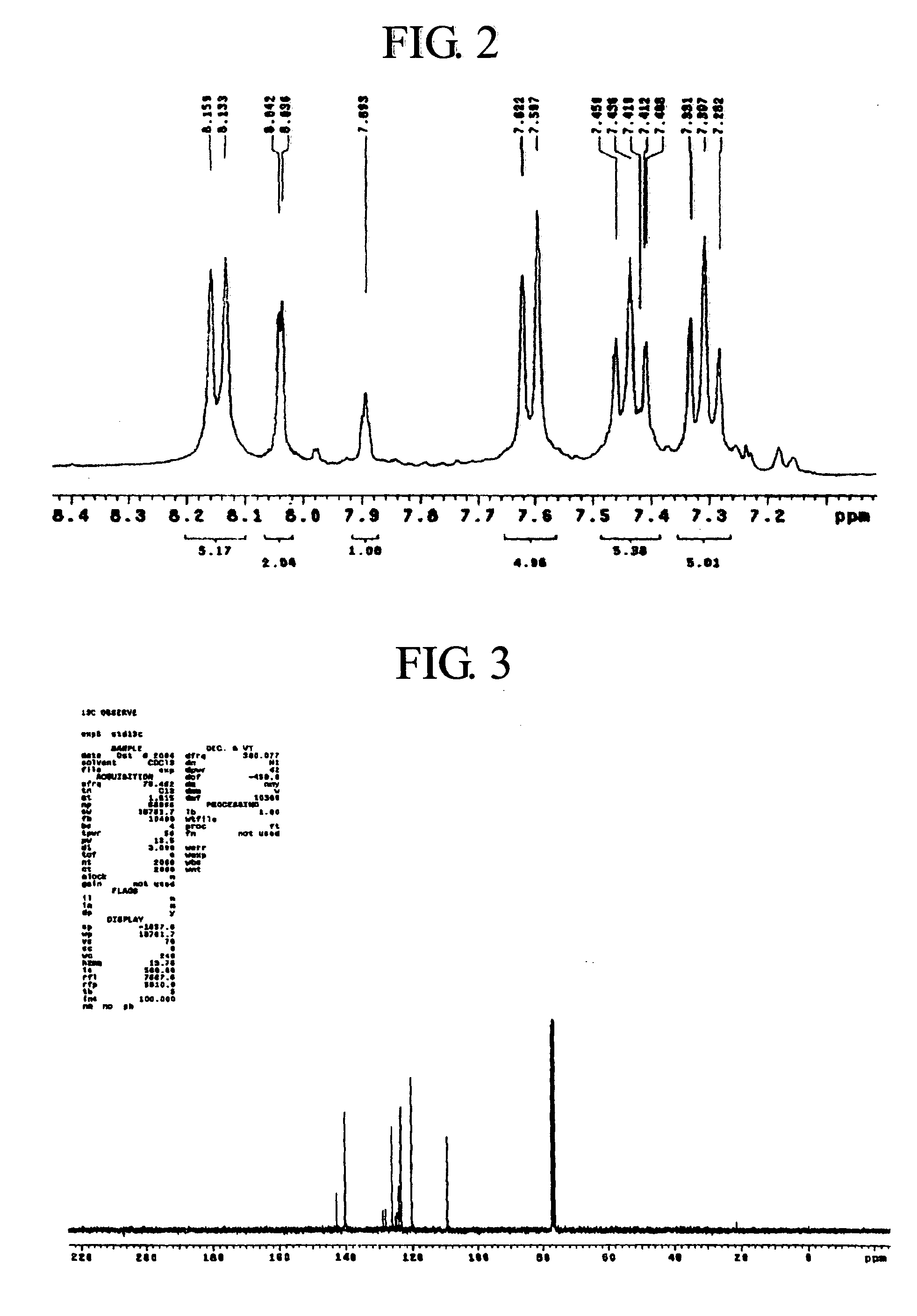Biphenyl derivatives and organic electroluminescent devices using the same
- Summary
- Abstract
- Description
- Claims
- Application Information
AI Technical Summary
Benefits of technology
Problems solved by technology
Method used
Image
Examples
synthesis example 1
Manufacture of Compound A
[0102]
[0103] 1) Manufacture of Compound 1a
[0104] 15.74 g (1.0 eq) of 1,3,5-tribromobenzene was dissolved in 100 ml of an anhydrous THF and then cooled to −78° C. 34.4 ml (1.1 eq) of 1.6 M n-butyllithium (n-BuLi) was slowly added thereto, and the result was mixed for one hour. 7.395 g (1.1 eq) of CuCl2 was quickly added to the resulting mixture, and then the result was reacted for 12 hours. After the reaction was completed, the reaction mixture was extracted using water and ethylacetate separately three times each, dried over anhydrous MgSO4 and concentrated, and then re-crystallized using CH2Cl2 / acetone, thus producing the compound 1a (Yield: 90%).
[0105] 2) Manufacture of Compound A
[0106] 2.5 g (5.3 mmole) of the compound 1a and 3.6 g (4.04 eq) of carbazole were dissolved in 60 ml of an anhydrous toluene, and 4.13 g (8.08 eq) of sodium tert-butoxide (t-BuONa), 0.323 g (0.3 eq) of tri(tert-butyl)phosphine {(t-Bu)3P}, and 1.169 g (0.24 eq) of Pd2(dba)3 (wh...
synthesis example 2
Manufacture of Compound Represented by Formula B
[0111]
[0112] Manufacture of Compound 1b
[0113] 20.87 g (0.168 mole, 4 eq) of 1,3-dibromobenzene and 7 g (1 eq) of carbazole were dissolved in 70 ml of anhydrous toluene, and 12.1 g (3 eq) of sodium tert-butoxide, 0.424 g (0.05 eq) of tri(tert-butyl)phosphine, and 1.533 g (0.04 eq) of Pd2(dba)3 as a catalyst were added to the resulting solution and reacted at 120° C. for 36 hours. After the reaction was completed, the reaction mixture was extracted using water and ethylacetate, dried, and purified using an open column using n-hexane and ethylacetate as an elute to remove side reaction products, thus producing the compound 1b (Yield: 50%).
[0114] 2) Manufacture of Compound 1c
[0115] 1.7 g (5.3 mmol) of the compound 1b was dissolved in 30 ml of anhydrous THF, and then cooled to −78° C. 3.463 mL (1.05 eq) of 1.6 M n-butyllithium was slowly added to the cooled solution and the result was stirred for 1 hour. 1.031 g (1.05 eq) of 2-isopropox...
synthesis example 3
Manufacture of Compound Represented by Formula C
[0120]
[0121] A compound C was produced in the same manner as the compound B, except that 1,4-dibromobenzen was used as the starting material instead of 1,3-dibromobenzene. The structure of the compound C was identified using 1H-NMR.
PUM
| Property | Measurement | Unit |
|---|---|---|
| Time | aaaaa | aaaaa |
| Time | aaaaa | aaaaa |
| Percent by mass | aaaaa | aaaaa |
Abstract
Description
Claims
Application Information
 Login to View More
Login to View More - R&D
- Intellectual Property
- Life Sciences
- Materials
- Tech Scout
- Unparalleled Data Quality
- Higher Quality Content
- 60% Fewer Hallucinations
Browse by: Latest US Patents, China's latest patents, Technical Efficacy Thesaurus, Application Domain, Technology Topic, Popular Technical Reports.
© 2025 PatSnap. All rights reserved.Legal|Privacy policy|Modern Slavery Act Transparency Statement|Sitemap|About US| Contact US: help@patsnap.com



